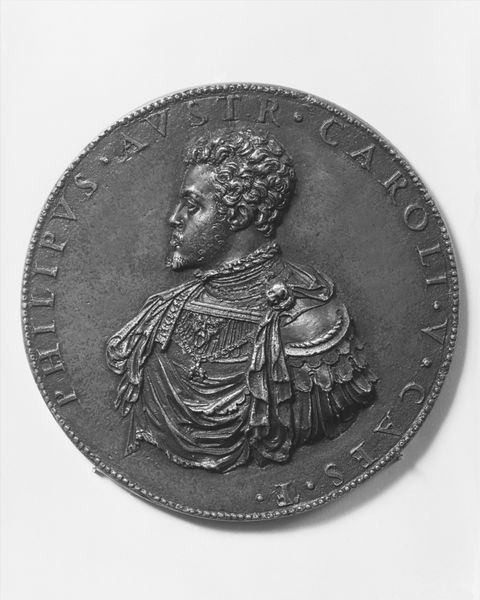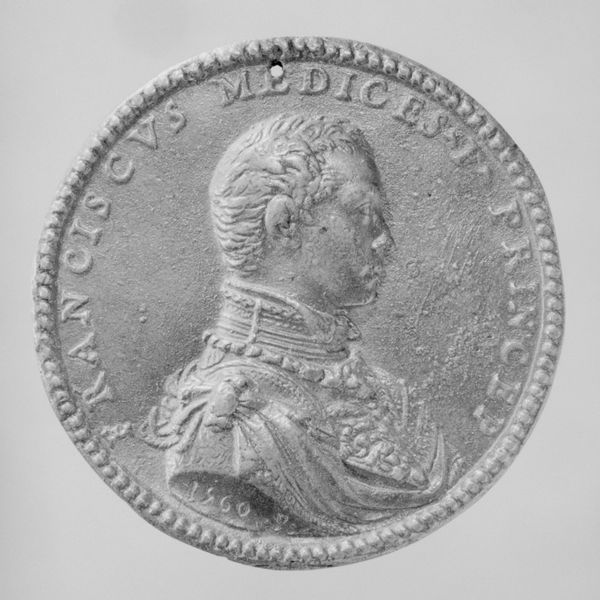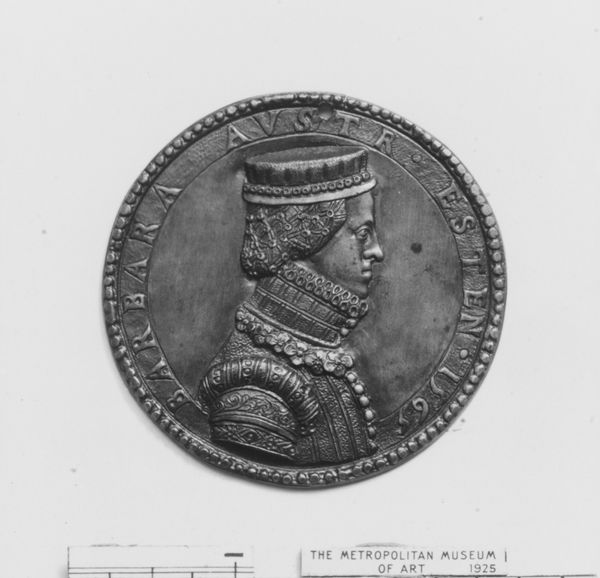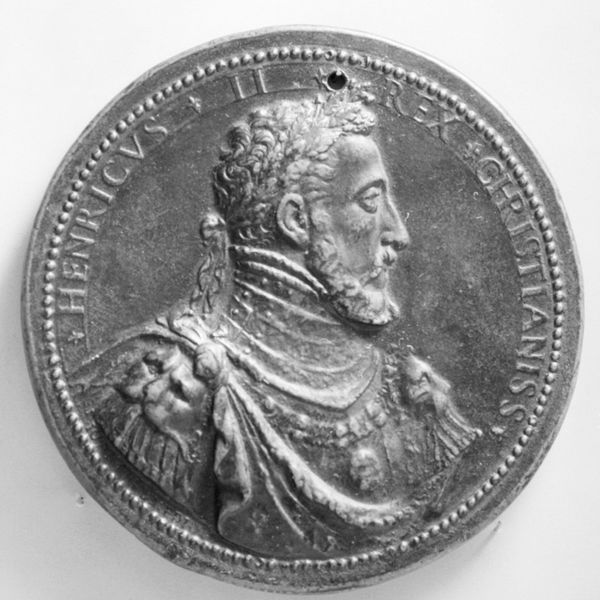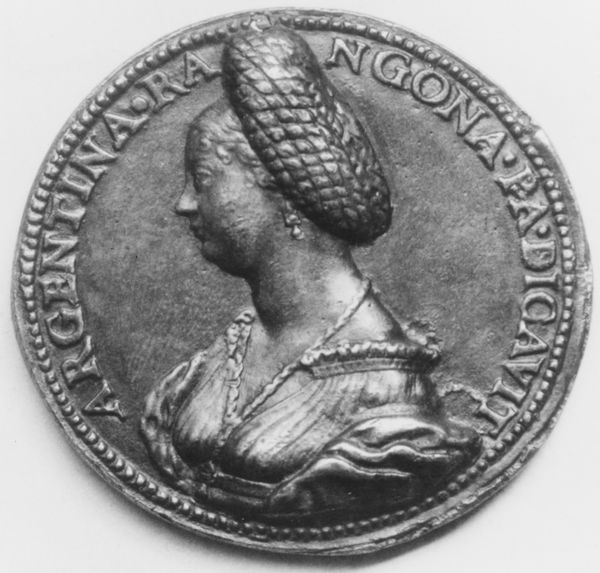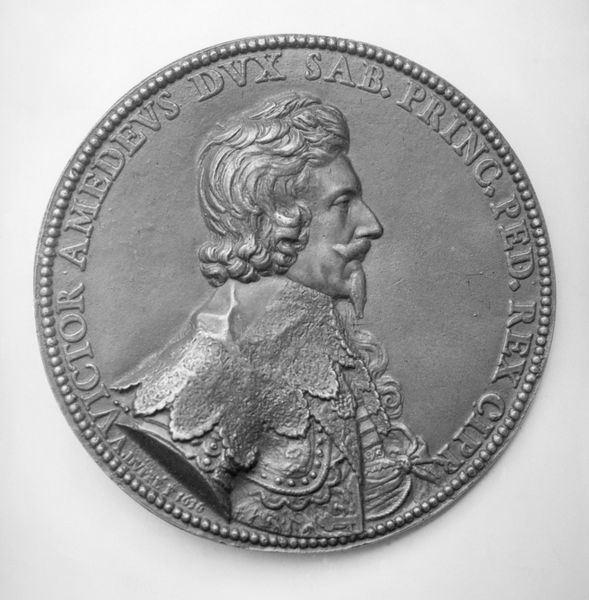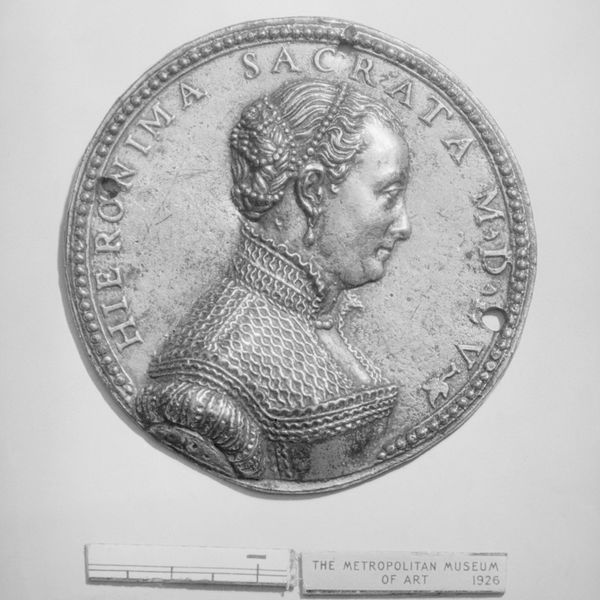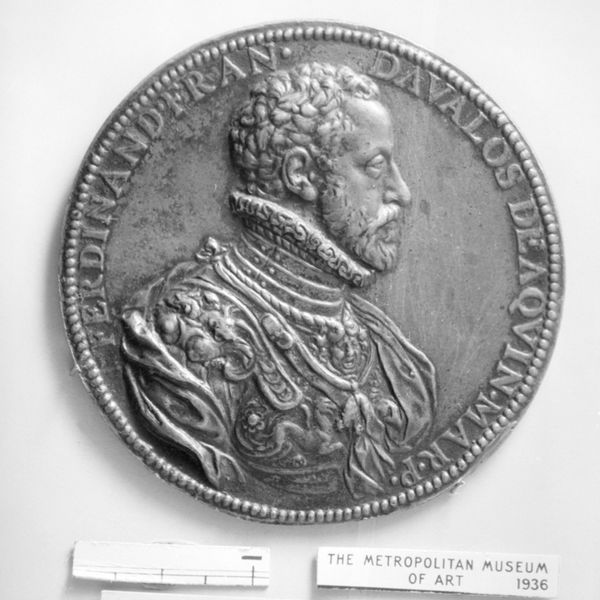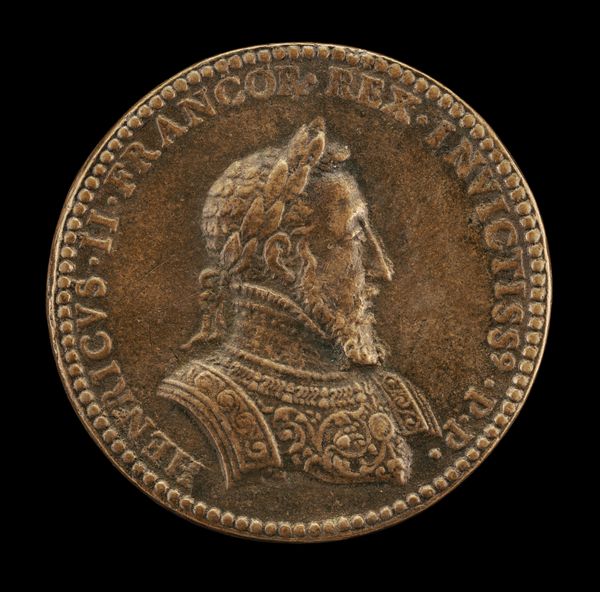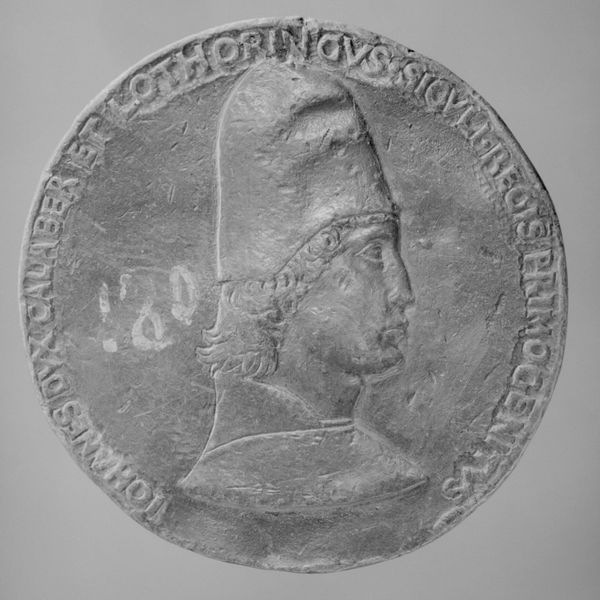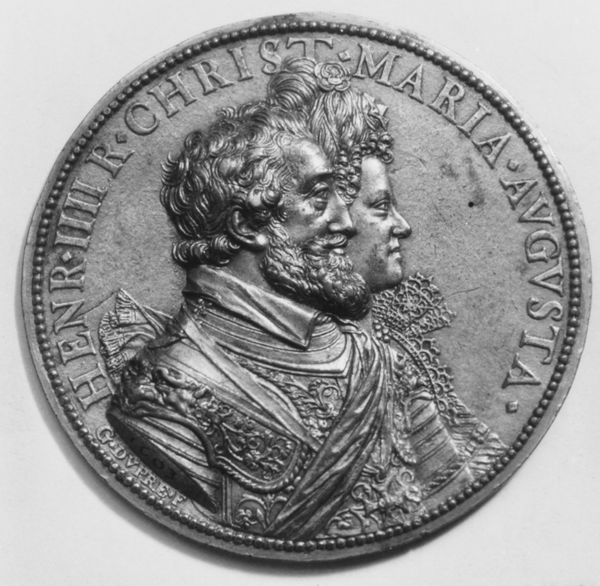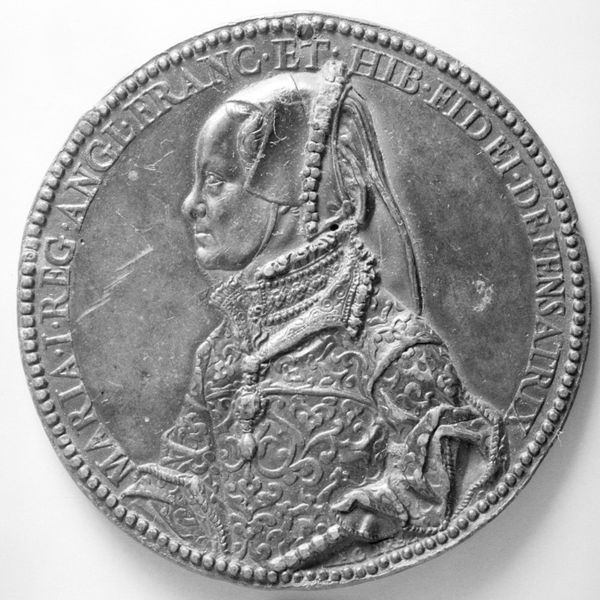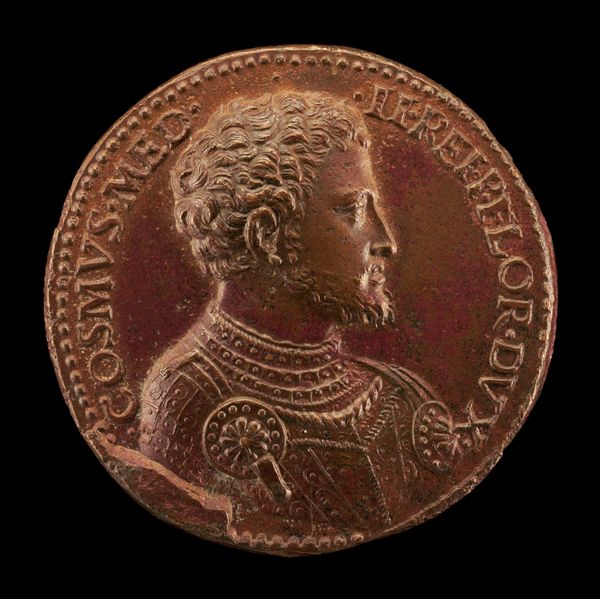
Maria Magdalena, Archduchess of Austria, Grand Duchess of Tuscany 1613
0:00
0:00
bronze, sculpture
#
portrait
#
medal
#
sculpture
#
bronze
#
mannerism
#
sculpture
#
carved
#
history-painting
#
decorative-art
#
profile
#
statue
Dimensions: Diam. 3 1/2 in. (89 mm.)
Copyright: Public Domain
Curator: This is a bronze portrait medal of Maria Magdalena, Archduchess of Austria, Grand Duchess of Tuscany, created in 1613 by Guillaume Dupré. It's currently housed in the Metropolitan Museum of Art. I find it really striking, with the incredible detail in her elaborate hair and clothing. What's your take? Editor: It’s interesting to see a royal portrait rendered in bronze, which seems like a distinctly material choice compared to paint on canvas. It's impressive how the artist has managed to capture such fine details. How do you interpret the artist's decision to work with bronze for this particular subject? Curator: I think the choice of bronze elevates the sitter's status, associating her with the durability and inherent value we attribute to metals. The production process itself speaks volumes. Consider the labor involved: mining, smelting, casting, and the meticulous carving. Each step contributes to the final product, representing a significant investment of resources and skill. In essence, it shows the immense wealth backing her, right? Editor: That's a compelling point. So it’s not just about capturing her likeness, but also about showcasing the social power embedded in the materials and production itself? Curator: Precisely! It challenges the traditional notion of art being purely aesthetic, forcing us to consider the economic and social systems that underpin its creation and reception. We can almost map the extraction of materials onto her very figure. Where did they get the materials? What craftspeople were employed? For what value? Editor: I see what you mean. I hadn’t considered the implications of bronze in terms of labor and access to resources. Curator: It shifts our focus from the individual portrayed to the larger network of people and processes involved in its creation, almost giving agency to the materials and processes themselves. It also makes us think about high art versus what we deem as "craft". Do you see that play in effect here? Editor: Yes, it makes me rethink how I view these kinds of objects and their position in history. Thanks, that's a fascinating perspective! Curator: Absolutely. It's all about questioning the narratives embedded in the materials and means of production.
Comments
No comments
Be the first to comment and join the conversation on the ultimate creative platform.
